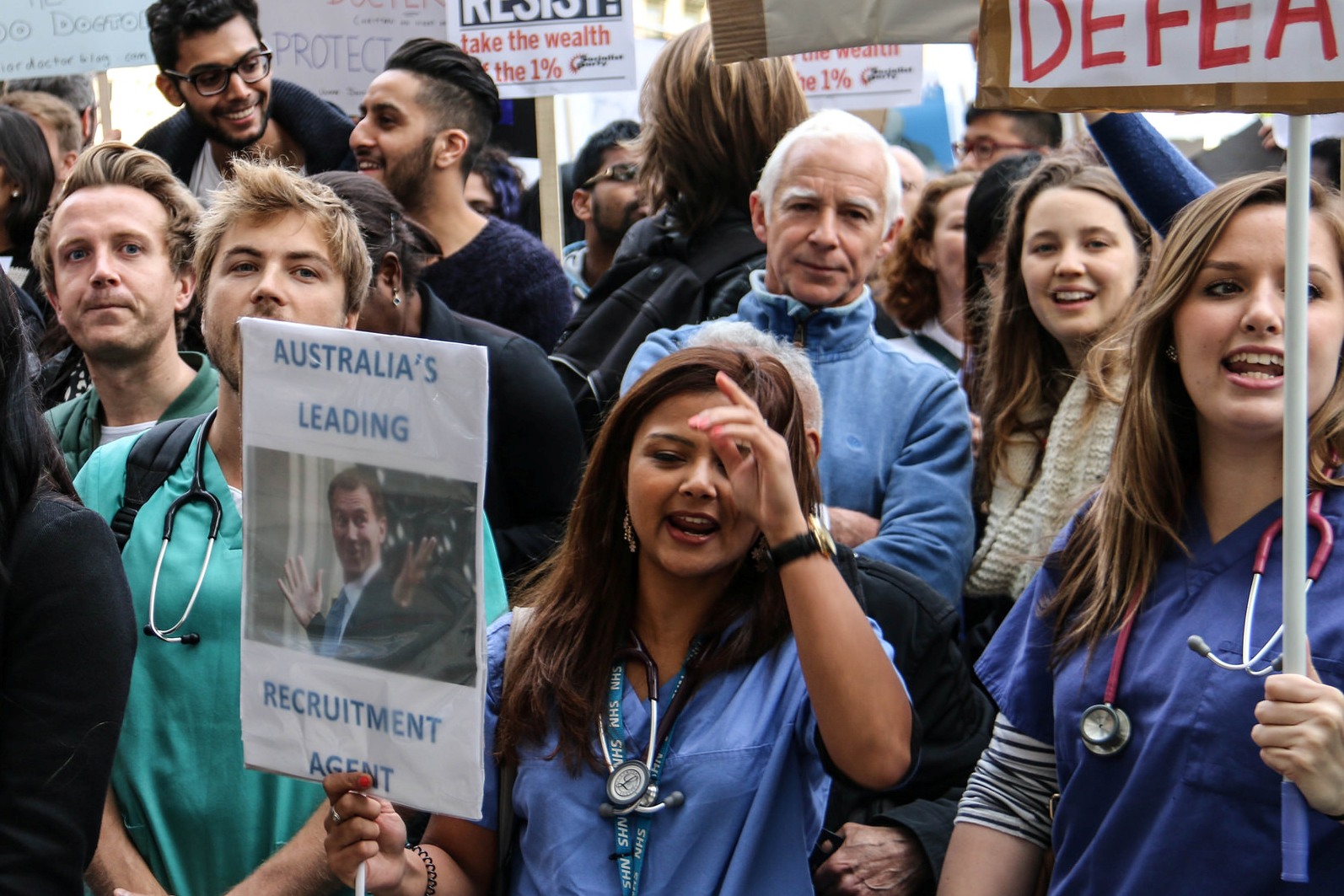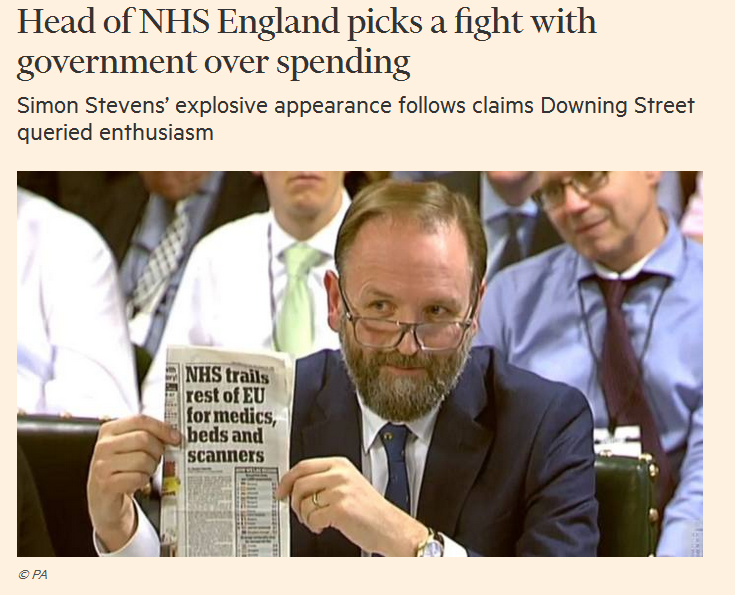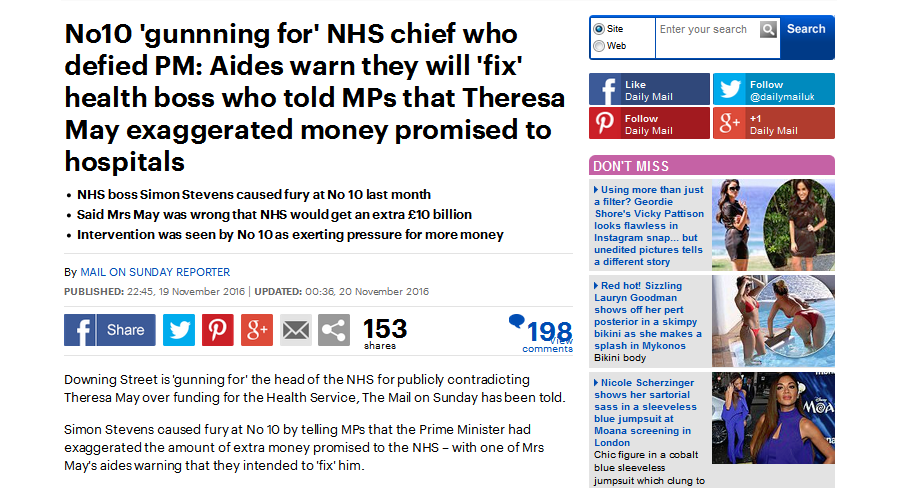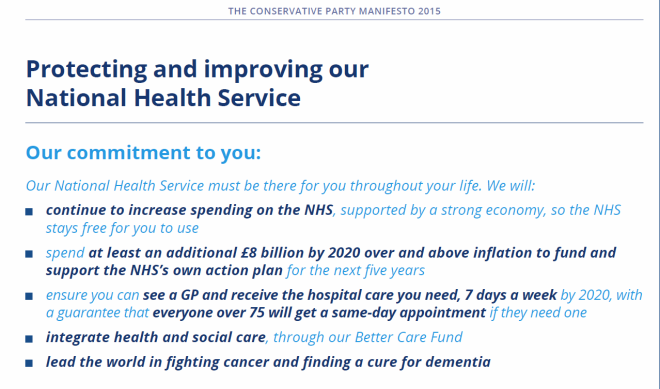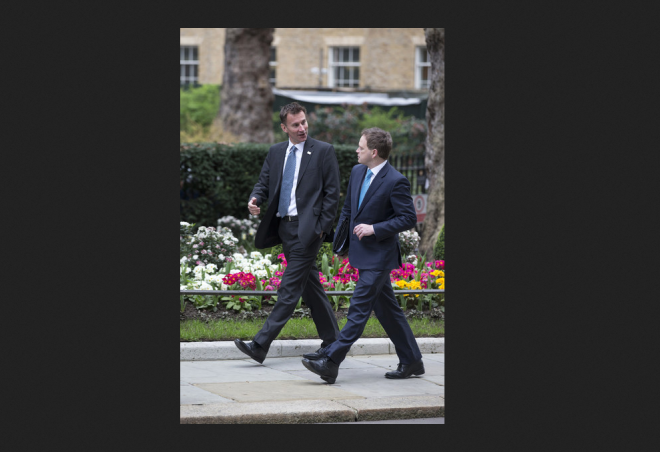Health and social care secretary Matt Hancock has announced that he is setting up a new unit to shake up #HealthTech. It says a lot about the man and the team around him that he’s called it #NHSX (you know, like SpaceX, it’s all about one guy and his gang, shooting for Mars).
So, I was putting together some analysis of this development for Highland Marketing this week, and it made me think about all the other, similar, ventures that I’ve seen come and go over something like twenty years of reporting on the NHS and its IT (yes, it’s really that long… and the analysis file is here).
The first NHS IT strategy I ever covered was Information for Health, back in 1998. There’s another blog post to be written about how what it was trying to do is remarkably similar to what NHS IT is still trying to do, but that’s for another day.
For the moment, the point is that IfH led to the creation of a properly constituted arms-length body, the NHS Information Authority, led by a chief executive, Gwyn Thomas, to deliver infrastructure and run model projects for trusts to follow.
The IfH approach struggled, not least because trusts went and spent the cash they were meant to spend on IT on other stuff. So, prime minister Tony Blair himself convened a seminar at Number 10 Downing Street that led to the creation of the National Programme for IT in the NHS.
This was supposed to sort things out by getting in big consultancies, that were supposed to know about project management, to contract with big IT companies, that were supposed to know about electronic patient records, to deploy on a regional basis.
The National Programme was led by a new director general for NHS IT, at the Department of Health. The first director general (2002) was Richard Granger, a bullish consultant who had led the successful roll-out of the London congestion charge. Granger placed some huge contracts, but it turned out that accountancy companies and US tech firms knew less about NHS IT than had been hoped, and NPfIT failed to deliver, at least for trusts.
So when Granger left, a more ‘NHS’, more conservative approach was tried. Matthew Swindells, a former trust chief executive and political advisor, was stepped in as interim chief information officer, to define a ‘clinical five’ or core set of functions that would get medics back on board with IT.

And then, when Swindells left for EPR vendor Cerner, a substantive chief information officer was appointed, Christine Connelly from Cadbury Schweppes (2008). I was going to write that Connelly lasted barely any time at all, but in fact she was in post for three years, before she left in a bout of DH infighting.
After Connelly’s departure, the government decided that what the NHS needed was some of the rigour that the Cabinet Office was trying to bring to the wider government digital agenda. So Katie Davis, executive director of the efficiency and reform group, was brought in (2011).
Davis really did last barely any time at all. She was gone in barely a year, as Andrew Lansley’s contested and misguided reforms of the NHS arrived in 2012. The Lansley reforms divided responsibility for NHS IT between the DH, which was meant to set policy, the NHS commissioning board / NHS England, which was meant to buy programmes, services and products to enact it, and a bunch of delivery organisations.
Despite all the other changes, the NHSIA had sort of continued up to this point, under a variety of names, and latterly alongside a data collection, analysis and publication outfit called NHS Information for Health. The two eventually emerged, as the Health and Social Care Information Centre, which is now called NHS Digital.
Around this point, another prime minister, David Cameron, decided he was very interested in health IT. In particular, he liked the idea of giving data to patients so they could vote with their feet if their local NHS wasn’t up to snuff, while ‘taking responsibility’ for their own health. To promote this ‘transparency’ agenda, he personally appointed Tim Kelsey, a former journalist and government transparency tsar as national information director (2014).
Kelsey then got to head up the national information board, a supposedly powerful co-ordination group to bring together all those post-Lansley bodies. The NIB issued the health service’s current IT strategy, Personalised Health and Care 2020, and also rebooted the NHS Choices website.
But amid the care.data debacle, and the growing realisation that serious competition within the NHS was not going to withstand the massive financial and demand challenges the service was facing, Kelsey left for Australia.
Fortunately for health tech, the health secretary who replaced Lansley, Jeremy Hunt, was into IT, and came up with a plan for the NHS to go ‘paperless’ by 2018. To deliver on this agenda, Kelsey’s replacement, Beverly Bryant (2016) was given a ‘wider remit’ as chief information and technology officer, reporting into Matthew Swindells, who was back as NHS England’s national director of commissioning, operations and information, and is now its deputy chief executive.
However, she was effectively side-lined into the struggling NHS Digital, as Swindells effectively took control of some key elements of the paperless agenda, such as the establishment of a global digital exemplar programme to complete the digitisation of trusts that was still outstanding from IfH and CfH, the Clinical 5 days and, indeed, Paperless2020… I did say there was another blog post to be written.
When Bryant understandably left, again for a supplier, this time System C, she was replaced by another central government recruit, Sarah Wilkinson from the Home Office (2017). But Wilkinson has been all-but invisible, and seems to have spent more of her time slimming down NHS Digital than doing much with the agency.
Instead, it is NHS England that has implemented the Wachter Review‘s recommendations to appoint a chief information and a chief clinical information officer and to run the GDE programme. And it is NHS England that has pursued the Empower the Patient programme to come up with a new NHS App.
Now, though, Hancock has arrived at the DHSC with a reputation for ‘digital’ and a determination to be seen to be ‘doing something’. NHSX is clearly a manifestation of that, and it looks set to be led by yet another government digital tsar, this time Matthew Gould from Hancock’s former department, Culture, Media and Sport.

Health tech journalists often say, when a prime minister or a health secretary with an interest in IT moves on, that the NHS was fortunate to have someone with that interest in charge of it. The quick review above suggests that’s correct, in that health tech policy and initiatives are closely associated with specific incumbents of Number 10 Downing Street and Number 18 Whitehall.
However, once they move on, so does the persistence and attention that might make them successful. This effect is magnified by the tendency of prime ministers and health secretaries to bring in their own, supposedly charismatic, leaders to head up their agendas. Because once their sponsors go, they tend to go as well.
Over the past twenty years, the cycle has got faster. Tony Blair was associated with NPfIT, and Richard Granger led CfH for at least five years. His substantive appointment, Christine Connelly, lasted three. David Cameron’s tsar, Tim Kelsey, did about the same, but his successors barely registered before they left. Hunt’s paperless agenda has had stable leadership within NHS England but not outside it; and it’s now being challenged by Hancock’s media savvy, app happy team.
This is destabilising. Many health tech vendors find Hancock a breath of fresh air, but they realise his impact will last only as long as he does, which may not be long, given Brexit and his own CV of rarely staying in ministerial or cabinet jobs for long.
It’s also complicating. Each abandoned approach leaves behind another layer of complexity to the health tech scene. Across the piste, some of NHSIA’s functions are still going within NHS Digital, while some of CfH’s contracts are still running. The GDEs are well entrenched, but non-exemplary trusts were told in the NHS Long Term Plan to continue to aspire to a ‘core’ level of digital maturity.
There’s the wreckage of the ‘transparency’ agenda in NHS England’s attempts to make local health and care records fit for population health management. The NHS is still running NHS Choices, albeit under a new name, to feed that whizzy NHS App. And now Hancock wants cloud-first, internet-first, digital-first services.
It’s possible that NHSX will turn out to be a bold initiative that cuts through all this clutter, comes up with a rationalised IT strategy for the NHS that can be funded, prioritised and delivered, and that Hancock and his preferred X-man will stick about to see it done.
It’s just that you wouldn’t bet on it. Which is unfortunate. Over twenty years, health tech has been too dependent on politicians looking for an eye catching initiative with which they can be personally associated, and with outsiders brought in to enthuse or shake-up the troops. It’s not worked, and it’s not what got man to the moon.
